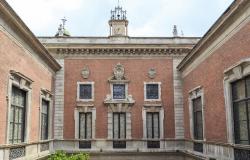UNESCO: Mantua and Sabbioneta




Mantua and Sabbioneta, in the Po valley, in the north of Italy, represent two aspects of Renaissance town planning: Mantua shows the renewal and extension of an existing city, while 30 km away, Sabbioneta represents the implementation of the period’s theories about planning the ideal city.
Typically, Mantua’s layout is irregular with regular parts showing different stages of its growth since the Roman period and includes many medieval edifices among them an 11th century rotunda and a Baroque theatre. Sabbioneta, created in the second half of the 16th century under the rule of one person, Vespasiano Gonzaga Colonna, can be described as a single-period city and has a right angle grid layout. Both cities offer exceptional testimonies to the urban, architectural and artistic realizations of the Renaissance, linked through the visions and actions of the ruling Gonzaga family. The two towns are important for the value of their architecture and for their prominent role in the dissemination of Renaissance culture. The ideals of the Renaissance, fostered by the Gonzaga family, are present in the towns’ morphology and architecture.
Mantua
46100 Mantua MN
Italy







